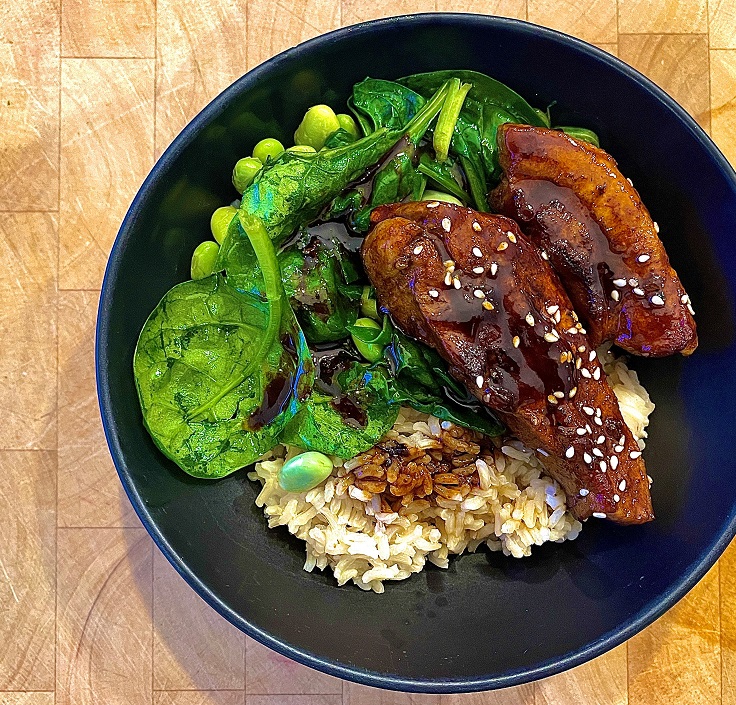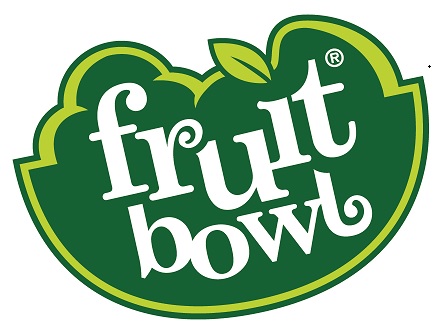Gluten-Free Diet Plan: What to Eat, What to Avoid, and How to Benefit
Gluten is a protein found in wheat, barley, rye, and some other grains. It gives bread its elasticity and chewiness, and it helps baked goods rise and hold their shape. However, for some people, gluten can cause serious health problems.
Creating a balanced meal plan for a gluten-free diet can be difficult, time consuming and generally not fun! But at FiveDinners we’ve done the hard work for you! You can join today to personalise your own meal plans that you’ll receive every week with five gluten-free dinnertime recipes (you can also choose a lot more like vegetarian, portion size, quick and easy and more!) Every week you’ll get your new plan that you can also amend if you fancy swapping a recipe for a different one. Sign up today to try us out! Click here to find out more.
If you have celiac disease, an autoimmune condition that damages the lining of your small intestine when you eat gluten, you need to follow a strict gluten-free diet for life. This is the only way to prevent symptoms such as diarrhea, bloating, abdominal pain, weight loss, anemia, and osteoporosis.
If you have non-celiac gluten sensitivity (NCGS), a condition that causes similar but less severe symptoms than celiac disease when you eat gluten, you may benefit from reducing or eliminating gluten from your diet. However, there is no clear consensus on how much gluten you can tolerate or how long you need to avoid it.
If you have a wheat allergy, a rare but potentially life-threatening reaction to wheat proteins that can cause hives, swelling, breathing difficulties, and anaphylaxis, you need to avoid all wheat products and any foods that may contain traces of wheat. However, you may be able to eat other gluten-containing grains such as barley and rye.
If you do not have any of these conditions, but you want to try a gluten-free diet for other reasons, such as weight loss, improved digestion, or general wellness, you may or may not experience any benefits. There is not enough evidence to support the claims that a gluten-free diet is healthier or more effective for weight loss than a balanced diet that includes gluten. In fact, a gluten-free diet may have some drawbacks, such as being more expensive, less convenient, and less varied than a regular diet.
Whatever your reason for going gluten-free, you need to know what foods you can eat, what foods you need to avoid, and how to plan your meals and snacks accordingly. Here is a guide to help you get started with a gluten-free diet plan.
What to Eat on a Gluten-Free Diet
The good news is that there are many naturally gluten-free foods that you can enjoy on a gluten-free diet. These include:
- Fruits and vegetables: All fresh fruits and vegetables are gluten-free and provide vitamins, minerals, antioxidants, and fiber. You can also eat frozen or canned fruits and vegetables as long as they do not contain any added sauces or seasonings that may contain gluten.
- Meat, poultry, fish, and eggs: All fresh meat, poultry, fish, and eggs are gluten-free and provide protein, iron, zinc, and B vitamins. You can also eat canned or frozen meat, poultry, fish and eggs as long as they do not contain any added sauces or seasonings that may contain gluten.
- Dairy products: Most dairy products, such as milk, cheese, yogurt, and butter, are gluten-free and provide calcium, protein, and vitamin D. However, some dairy products, such as flavored yogurt, ice cream, and cheese spreads, may contain gluten as an additive. Always check the label for ingredients and allergens before buying or consuming any dairy product.
- Grains and starches: There are many gluten-free grains and starches that you can eat on a gluten-free diet, such as rice, corn, quinoa, buckw quinoa, buckwheat, millet, sorghum, teff, amaranth, oats, potatoes, and tapioca. These foods provide carbohydrates, fiber, and various nutrients. However, some grains and starches may be contaminated with gluten during processing or packaging. Always look for certified gluten-free labels or brands when buying or eating any grain or starch product.
- Nuts and seeds: All nuts and seeds are gluten-free and provide healthy fats, protein, fiber, and minerals. You can eat them raw, roasted, or as nut or seed butters. However, some nuts and seeds may be coated with seasonings or additives that contain gluten. Always check the label for ingredients and allergens before buying or eating any nut or seed product.
- Legumes: All legumes, such as beans, lentils, peas, soybeans, and peanuts, are gluten-free and provide protein, fiber, iron, folate, and other nutrients. You can eat them cooked, canned, or as tofu or tempeh. However, some legumes may be prepared with sauces or seasonings that contain gluten. Always check the label for ingredients and allergens before buying or eating any legume product.
- Oils and fats: Most oils and fats are gluten-free and provide calories and essential fatty acids. You can use them for cooking or dressing your salads. However, some oils and fats may be flavored or mixed with other ingredients that contain gluten. Always check the label for ingredients and allergens before buying or eating any oil or fat product.
- Herbs and spices: Most herbs and spices are gluten-free and provide flavor and antioxidants to your dishes. You can use them fresh or dried. However, some herbs and spices may be blended with other ingredients that contain gluten. Always check the label for ingredients and allergens before buying or eating any herb or spice product.
- Condiments and sauces: Some condiments and sauces are gluten-free and provide taste and moisture to your meals. You can use them sparingly to enhance your dishes. However, some condiments and sauces may contain gluten as an ingredient or a thickener. For example, soy sauce, teriyaki sauce, barbecue sauce, ketchup, mustard, mayonnaise, salad dressings, and gravy may have gluten in them. Always check the label for ingredients and allergens before buying or eating any condiment or sauce product.
- Snacks and desserts: There are some gluten-free snacks and desserts that you can eat on a gluten-free diet, such as popcorn, rice cakes, corn chips, fruit bars, dried fruits, nuts, seeds, chocolate, candy, ice cream, pudding, and gelatin. However, many snacks and desserts are made with wheat flour or other gluten-containing ingredients. For example, cookies, cakes, pies, pastries, muffins, donuts, crackers, pretzels, granola bars, cereal bars, and oatmeal may have gluten in them. Always check the label for ingredients and allergens before buying or eating any snack or dessert product.
- As you can see, there are plenty of foods that you can eat on a gluten-free diet. However, you need to be careful and read the labels of any packaged or processed foods that you buy or eat. You also need to be aware of cross-contamination, which is when gluten gets into gluten-free foods during preparation or storage. For example, if you use the same toaster for regular bread and gluten-free bread, or if you use the same cutting board for gluten-free and gluten-containing foods, you may contaminate your food with gluten. To prevent cross-contamination, you need to use separate utensils and appliances for gluten-free and gluten-containing foods, or clean them thoroughly before using them.
What to avoid on a Gluten-Free Diet
The main foods that you need to avoid on a gluten-free diet are those that contain wheat, barley, rye, and any products made from them. These include:
- Bread, pasta, noodles, couscous, bulgur, semolina, spelt, kamut, farro, and other wheat-based products.
- Barley malt, malt vinegar, malt extract, malt syrup, and other barley-based products.
- Rye bread, rye crackers, rye flour, and other rye-based products.
- Seitan, a meat substitute made from wheat gluten.
- Beer, ale, lager, stout, and other alcoholic beverages made from barley or wheat.
Some foods that may contain hidden sources of gluten are:
- Soups, broths, stocks, bouillon cubes, and gravy that may use wheat flour as a thickener or flavor enhancer.
- Soy sauce, teriyaki sauce, barbecue sauce, ketchup, mustard, mayonnaise, salad dressings, and other sauces that may use wheat or barley as an ingredient or a thickener.
- Processed meats, such as sausages, bacon, ham, hot dogs, deli meats, and pâté that may use wheat or barley as a filler or a binder.
- Meat alternatives, such as veggie burgers, nuggets, sausages, and meatballs that may use wheat or barley as a filler or a binder.
- Seasoned or marinated meat, poultry, fish, and tofu that may use wheat or barley as a flavoring or a coating.
- Battered or breaded foods, such as chicken nuggets, fish and chips, onion rings, and mozzarella sticks that may use wheat flour as a batter or a breading.
- Cereal, granola, oatmeal, and muesli that may use wheat, barley, or rye as an ingredient or a contaminant.
- Biscuits, cookies, cakes, pies, pastries, muffins, donuts, and other baked goods that may use wheat flour as a main ingredient or a contaminant.
- Crackers, pretzels, breadsticks, and other snacks that may use wheat flour as a main ingredient or a contaminant.
- Ice cream, pudding, custard, and other desserts that may use wheat flour as a thickener or a stabilizer.
- Chocolate, candy, licorice, and other sweets that may use wheat flour or barley malt as an ingredient or a coating.
- Coffee, tea, herbal infusions, and other beverages that may use barley or rye as a flavoring or a contaminant.
- These are some of the foods that you need to avoid on a gluten-free diet. However, this is not an exhaustive list. There may be other foods that contain gluten or traces of gluten that are not mentioned here. Therefore, you need to be vigilant and read the labels of any food products that you buy or eat. You also need to ask questions and inform the staff of your dietary needs when you eat out at restaurants or cafes.
How to Benefit from a Gluten-Free Diet
A gluten-free diet is essential to prevent the damage and complications caused by gluten. A gluten-free diet can also help improve the symptoms and quality of life of people with celiac disease.
For those who have non-celiac gluten sensitivity, a gluten-free diet may help reduce the discomfort and distress caused by gluten. A gluten-free diet may also help improve the digestive, mental, and physical health of people with non-celiac gluten sensitivity.
For those who have a wheat allergy, a gluten-free diet can help prevent the allergic reactions and the risk of anaphylaxis caused by wheat. A gluten-free diet can also help avoid the inflammation and irritation caused by wheat.
For those who do not have any medical reason to avoid gluten, a gluten-free diet may or may not have any benefits. Some people may feel better or lose weight on a gluten-free diet, but this may be due to other factors, such as eating more fruits and vegetables, cutting down on processed foods, or reducing calories. Some people may not notice any difference or may even experience negative effects on a gluten-free diet, such as nutrient deficiencies, increased costs, or social isolation.
Therefore, the benefits of a gluten-free diet depend on your individual needs and goals. If you are considering a gluten-free diet for health reasons, you should consult your doctor or a registered dietitian before making any changes to your diet. They can help you diagnose your condition, plan your meals, and monitor your progress. If you are considering a gluten-free diet for personal reasons, you should weigh the pros and cons carefully and make an informed decision. You should also make sure that you eat a balanced and varied diet that meets your nutritional needs.
A gluten-free diet can be challenging but rewarding for some people. By knowing what to eat, what to avoid, and how to benefit from a gluten-free diet, you can make the most of your dietary choice and enjoy a healthy and happy life.






